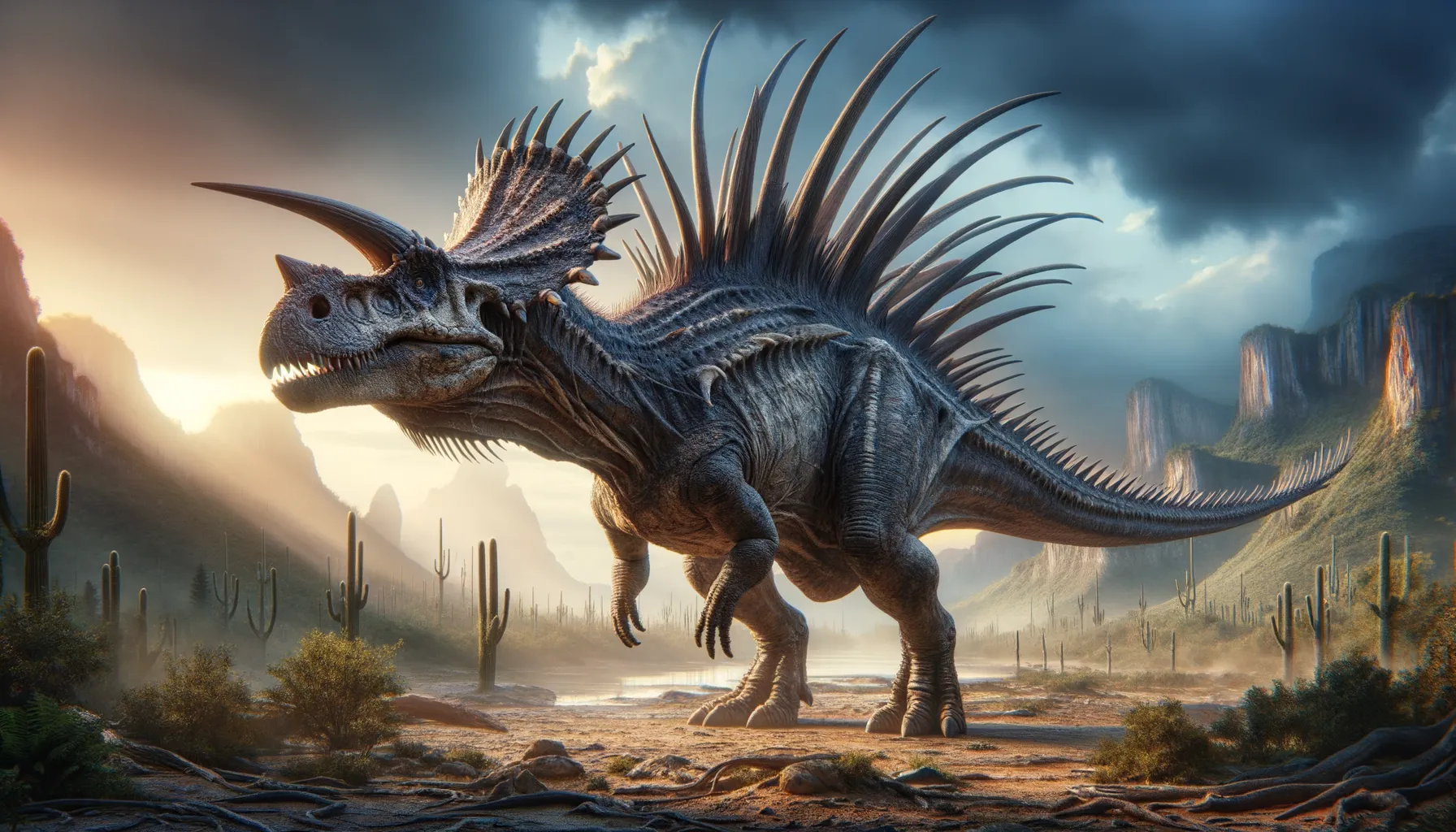
Akainacephalus
Armor-plated defender from the Cretaceous.
Period
Cretaceous
Length
Approximately 5 meters long.
Height
About 1.5 meters at the hips.
Weight
Roughly 1 to 2 tons.
Akainacephalus was a heavily-armored dinosaur known for its distinctive spiky and knobby skull. As a member of the ankylosaur family, it traversed Earth during the late Cretaceous period, primarily in the North American region. Its robust, low-slung body was covered in thick, bony armor, providing protection against predators. A herbivore by nature, Akainacephalus likely relied on its sturdy, fused bones for defense, while its club-like tail acted as a formidable weapon against threats.
Diet
Akainacephalus fed primarily on low-lying vegetation. Its shovel-like beak helped it clip tough plants and ferns. Its flat teeth were adapted for grinding plant material.
Hunting
Being an herbivore, Akainacephalus did not hunt for prey. Its primary concern was foraging for plants. Its defensive adaptations helped deter predators rather than engage in active pursuit.
Environmental challenges
Akainacephalus faced environmental challenges such as seasonal changes in temperature and food availability. During the late Cretaceous, rising sea levels and volcanic activity could have affected its habitat. Competition for resources with other herbivorous species would have been another challenge.
Speed
Slow-moving due to its heavy armor.
Lifespan
Estimated to be several decades.
First discovery
First discovered in Utah, USA, in 2008.
Fun Facts
- Akainacephalus was a heavily armored dinosaur, which means it had lots of bony plates on its body for protection.
- It lived during the Late Cretaceous period, about 76 million years ago, in what is now Utah, USA.
- The name Akainacephalus means 'thorny head', a reference to its spiky, helmet-like skull.
- Akainacephalus was part of a group of dinosaurs called ankylosaurs, known for their impressive body armor.
- It had a club-like tail which it could use as a weapon to defend itself against predators.
- This dinosaur was a herbivore, which means it ate plants, likely low-lying shrubs and vegetation.
- Scientists believe the spiky armor and tail club were crucial for its survival in a world filled with large predators.
Growth and Development
Like many dinosaurs, Akainacephalus likely hatched from eggs. Its bony plates and tail club would have developed as it grew. This gradual armoring would have provided increasing protection against predators as it matured.
Habitat
Akainacephalus lived in a semi-arid environment with open woodlands. It likely preferred areas with ample vegetation for feeding. Water sources such as rivers or lakes would have been essential for survival.
Interaction with other species
It coexisted with other herbivorous dinosaurs, sharing its habitat. Predators of the time included theropods like Tyrannosaurus rex. Its defensive armor and tail club were vital in interactions with these predators.
Natural lifespan
Its natural lifespan was likely several decades.
Reproduction
Akainacephalus reproduced by laying eggs, like most dinosaurs. It is believed to have built nests to protect its eggs. Parental care after hatching remains speculative but possible.
Social behaviour
Akainacephalus's social behavior is not well-documented. It may have lived solitarily or in small groups. Group living could provide safety in numbers against predators.
Fossil locations
The primary fossil location for Akainacephalus is the Kaiparowits Formation in Utah, USA. This site has provided crucial insights into Cretaceous ecosystems. Its discovery enriches our understanding of North American ankylosaurs.
